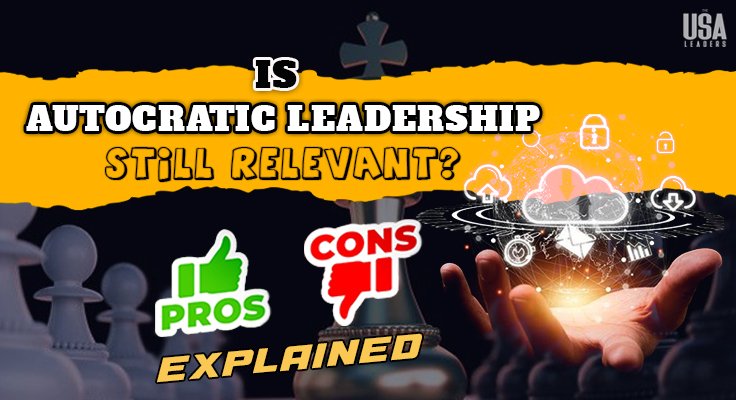Are you facing leadership challenges in your organization?
You can overcome these challenges to enhance team performance and foster a positive work environment. If you are a manager or a team leader, understanding what employees really want can significantly improve your leadership skills.
In this blog, we will unveil 18 eye-opening facts that reveal what employees really want, helping you to effectively address leadership challenges in your organization.
Employee Engagement
- A Gallup study reveals that 85% of the global workforce is disengaged, leaving only 15% engaged at work.
- Among employees, 59% are passively disengaged (quiet quitting), while 18% are actively disengaged (loud quitting). These employees often point to workplace culture, compensation, and well-being as areas for improvement.
- Disengaged employees are costing U.S. businesses between $450 billion to $550 billion in lost productivity annually, with these employees being 18% less productive than their engaged counterparts. [Source: Gallup survey]
Imagine a company as a ship. Employees are crew members, their engagement is their rowing effort. Ideally, all crew members would be fully engaged, rowing in sync, propelling the ship efficiently. This is 100% employee engagement.
However, only 15 out of 100 crew members are actively rowing. This is one of the significant leadership challenges.
Among the non-engaged, 59% are ‘quiet quitting.’ They’re on the ship, holding the oars but not rowing. They might be dissatisfied with the company culture, pay, or well-being. They’re not causing trouble, but they’re not contributing either.
Then, there are the 18% who are ‘loud quitting.’ They’re not just failing to row but are actively disrupting the ship. They might be complaining, arguing, or even drilling holes in the ship. This is another facet of leadership challenges.
This lack of engagement isn’t just about slower progress. It’s costly.
So, future leaders must find ways to:
- Engage the ‘quiet quitters’
- Neutralize the ‘loud quitters’
- Foster an environment where more crew members are actively and enthusiastically working
Knowledge Silos
- The Chaos Manifesto 2014 states that 33% of projects fail due to insufficient team involvement, emphasizing the importance of clear collaboration.
- The absence of collaboration can result in ‘knowledge silos,’ causing information to be confined within teams, leading to redundant efforts and lost learning opportunities.
- In such ‘siloed’ environments, crucial information and expertise remain isolated within specific teams, obstructing organizational knowledge growth and sharing.
Consider a company as a football team. In a successful team, each player knows their role and their contribution to the game plan. This is collaboration.
However, some players are unclear about their roles or not fully committed, leading to a disjointed team that struggles to win games. This lack of collaboration creates ‘knowledge silos,’ where players excel individually but lack understanding of the teamwork, leading to missed opportunities.
In these ‘siloed’ environments, valuable information gets trapped within teams, hindering knowledge sharing and growth, leading to duplication of efforts and missed opportunities for teamwork and improvement. This presents leadership challenges for the captain.
The challenge is to build a collaborative environment where every team member understands their role and its contribution to the team’s success. This involves:
- Breaking down knowledge silos
- Promoting open communication
- Ensuring that everyone feels involved and valued.
Change Management
- 70% of change initiatives fail, underlining the challenges in executing effective change management strategies.
- Prosci’s research indicates a lack of change buy-in and solution support as a key obstacle. This resistance can stem from fear of the unknown, job insecurity, or inadequate communication.
- 31% of CEOs are fired for mismanaging change, underscoring the critical role leadership plays in navigating organizational change.
Think about a company as a ship sailing towards its goals. The journey isn’t always smooth; it often needs to change course due to various factors, similar to organizational change initiatives.
Imagine if 70% of the time, the ship fails to change its course successfully. It’s likely to hit obstacles or get caught in bad weather, delaying or even preventing it from reaching its destination. This mirrors when 70% of change initiatives in organizations fail.
The success of a course change depends on the crew’s support. If they resist change due to fear, insecurity, or lack of communication the ship struggles to change its course. This is much like the lack of change buy-in in organizations, where 37% of employees resist change.
The captain’s role is crucial in navigating these changes. If they fail, they might be replaced, as 31% of CEOs are fired for mismanaging change.
If the ship constantly changes its course, the crew can become overwhelmed, similar to the change fatigue experienced by employees in organizations undergoing constant changes. To navigate these changes:
- Clear communication
- Address anxieties and insecurities
- Manage change in a way that keeps the organization on track to achieve its goals.
Decision distress
- An Oracle study reveals that 90% of business leaders experience decision distress due to data overload, adversely affecting their quality of life.
- 26% struggle with data credibility, and 80% abandon decision-making due to overwhelming data.
- This decision paralysis negatively impacts the quality of life for 88% of people, leading to increased anxiety (38%), missed opportunities (40%), and unnecessary spending (42%).
Imagine a novelist trying to write a book. He has a lot of information – character backstories, plot ideas, historical facts, and so on. However, the sheer volume of this information can be overwhelming, leading to “decision distress.”
This reflects leadership challenges where data overload makes decision-making stressful.
In some cases, the novelist might question the credibility of the information they have. Is the historical fact accurate? Is the character’s backstory believable? This mirrors the struggle of some leaders who question the credibility of their data.
Sometimes, the overload of information can be so overwhelming that the novelist cannot move forward with the story. They are stuck, unable to decide which plot direction to take or which character to focus on.
This decision paralysis can have negative impacts. It can lead to increased anxiety, missed opportunities (like a great plot twist or character development), and unnecessary spending (time spent on irrelevant research or rewriting).
Similarly, decision paralysis in leadership can lead to increased stress, missed business opportunities, and wasteful spending. So, the key is to:
- Learn how to manage and interpret data effectively
- Ensuring its credibility
- Making informed decisions without letting the volume of data lead to decision paralysis.
Conflict Resolution
- 48% of employees believe managers need more training in handling conflicts.
- 76% of employees prefer to avoid conflict when possible. This avoidance can lead to unresolved issues, resentment, and decreased productivity.
- 27% of employees quit their jobs due to unresolved conflicts.
Let’s consider a scenario of a coach training a sports team to understand these statistics better.
A coach often faces conflicts among team members. These conflicts could arise from disagreements about strategies, roles, or personal issues.
Some team members might feel that their coach needs more training in handling these conflicts, much like employees who believe their managers could benefit from additional conflict resolution training.
Many team members might prefer to avoid conflict altogether, similar to employees who would rather keep the peace than voice their concerns. However, this avoidance can lead to unresolved issues and resentment, affecting the team’s performance and morale.
Unresolved conflicts can lead to serious consequences. Some team members might choose to leave the team if conflicts are not addressed, disrupting the team’s harmony and potentially affecting their performance in games.
That’s why it is crucial to learn:
- How to manage and resolve conflicts effectively
- How to tackle unresolved conflicts
- Ensure a harmonious and productive work environment.
Authority Delegation
- A Harvard Business Review article states that a classic sign of insufficient delegation is a manager who works long hours while their team keeps “strangely regular hours.” This suggests the manager isn’t delegating tasks, leading to burnout for themselves and a lack of growth for their team.
- When employees don’t have the authority to make decisions or complete tasks independently, they can feel underutilized and unimportant. A study by the Society for Human Resource Management (SHRM) found that a lack of growth opportunities is a major reason employees leave their jobs.
- When managers micromanage and hoard tasks, they prevent employees from developing their skills and taking on new challenges. This limits the team’s overall potential and can lead to stagnation.
These insights highlight the importance of effective delegation in the workplace, a key aspect of addressing leadership challenges. It not only helps in preventing burnout among managers but also fosters a sense of growth and development among team members.
Moreover, it helps in building trust within the team and stimulates creativity by allowing team members to take on new challenges. On the contrary, poor delegation can lead to a lack of trust, stagnation, and even employee attrition.
Therefore, managers must strike a balance between delegation and oversight to ensure a healthy and productive work environment, effectively overcoming these leadership challenges.
Here are the strategies to tackle the problem of poor delegation:
- Provide employees with the necessary authority and autonomy to make decisions and complete tasks independently.
- Implement training programs to equip managers with the skills to delegate effectively.
- Encourages skill development and offers growth opportunities.
Conclusion
We hope this blog has enlightened you about the leadership challenges and the 18 eye-opening facts that reveal what employees really want.
If you found this blog valuable, then please subscribe to our YouTube Channel for more leadership development videos. You can also find us on Twitter and Instagram. Remember, understanding and addressing leadership challenges is the key to a successful and harmonious workplace.





















